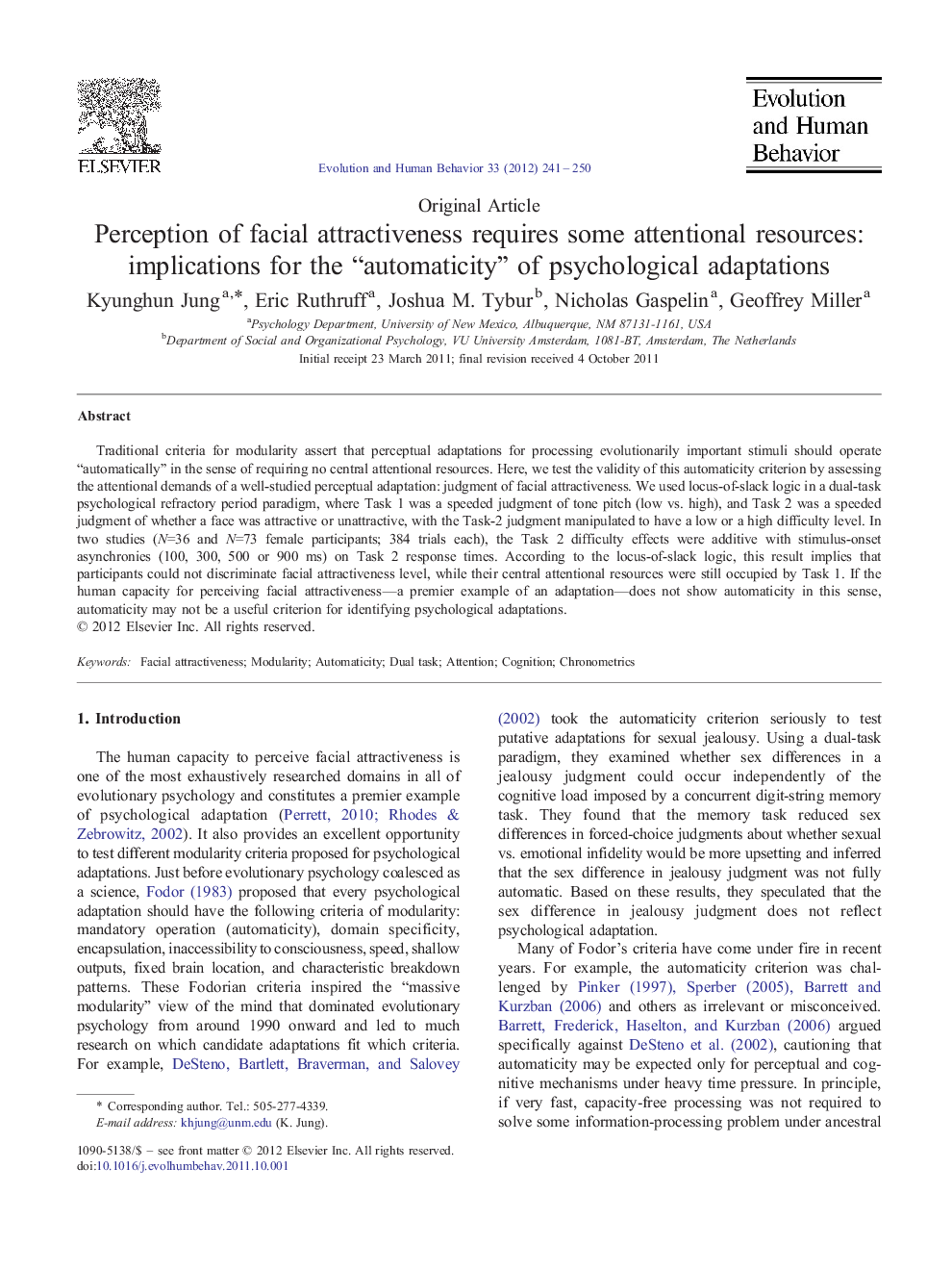| Article ID | Journal | Published Year | Pages | File Type |
|---|---|---|---|---|
| 943262 | Evolution and Human Behavior | 2012 | 10 Pages |
Traditional criteria for modularity assert that perceptual adaptations for processing evolutionarily important stimuli should operate “automatically” in the sense of requiring no central attentional resources. Here, we test the validity of this automaticity criterion by assessing the attentional demands of a well-studied perceptual adaptation: judgment of facial attractiveness. We used locus-of-slack logic in a dual-task psychological refractory period paradigm, where Task 1 was a speeded judgment of tone pitch (low vs. high), and Task 2 was a speeded judgment of whether a face was attractive or unattractive, with the Task-2 judgment manipulated to have a low or a high difficulty level. In two studies (N=36 and N=73 female participants; 384 trials each), the Task 2 difficulty effects were additive with stimulus-onset asynchronies (100, 300, 500 or 900 ms) on Task 2 response times. According to the locus-of-slack logic, this result implies that participants could not discriminate facial attractiveness level, while their central attentional resources were still occupied by Task 1. If the human capacity for perceiving facial attractiveness—a premier example of an adaptation—does not show automaticity in this sense, automaticity may not be a useful criterion for identifying psychological adaptations.
